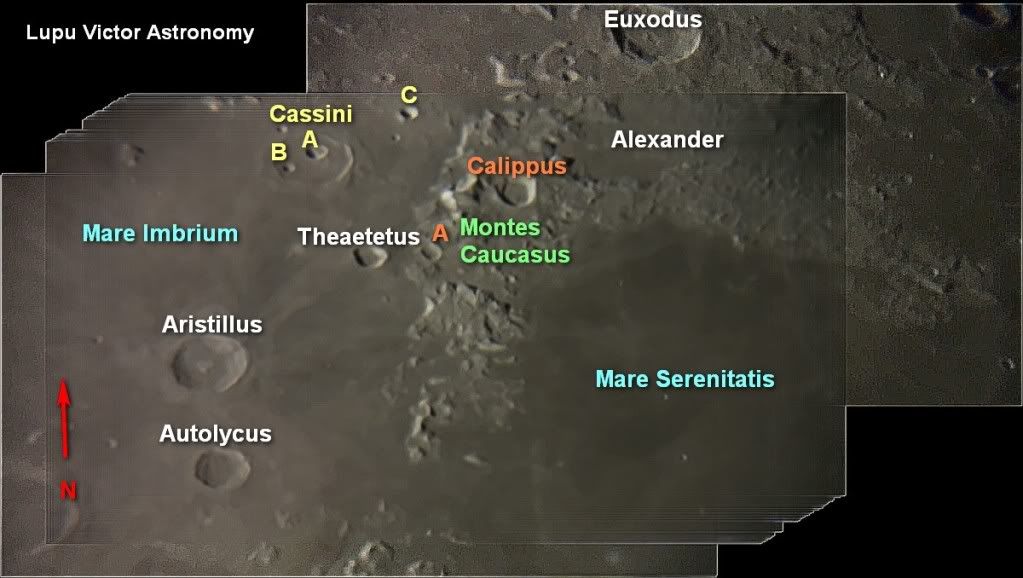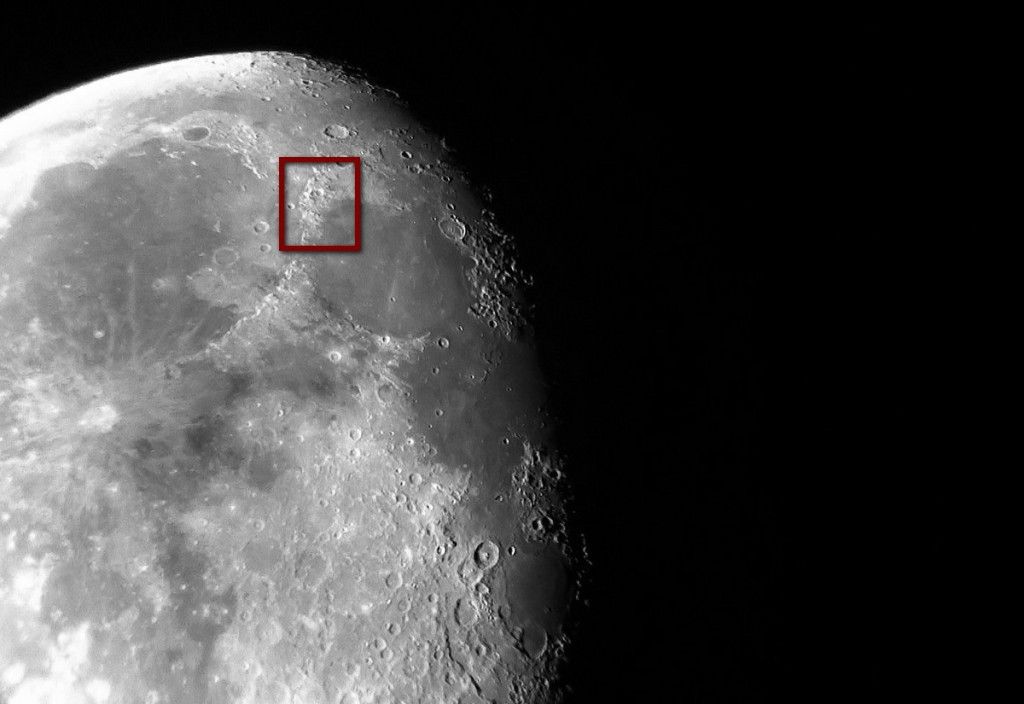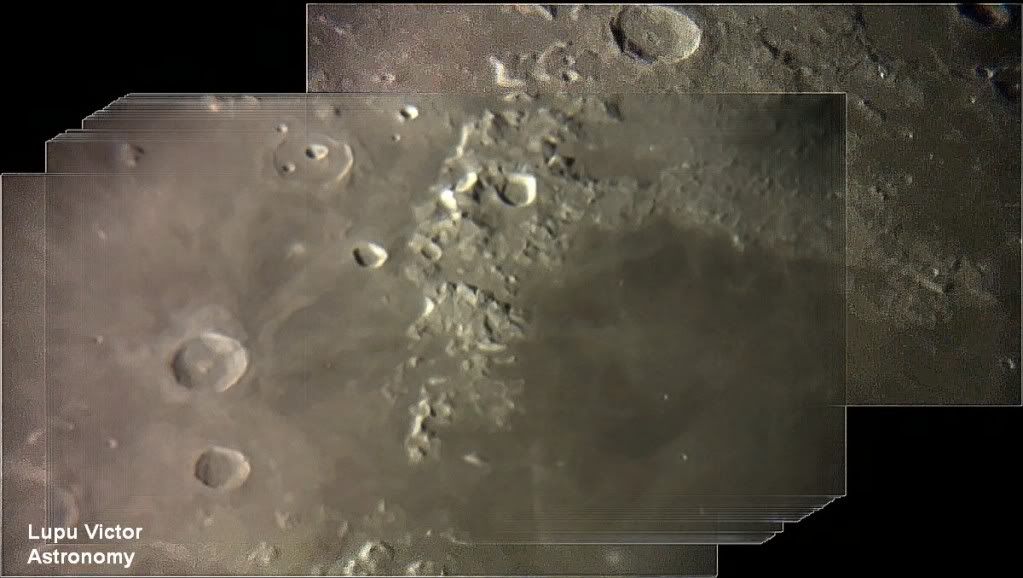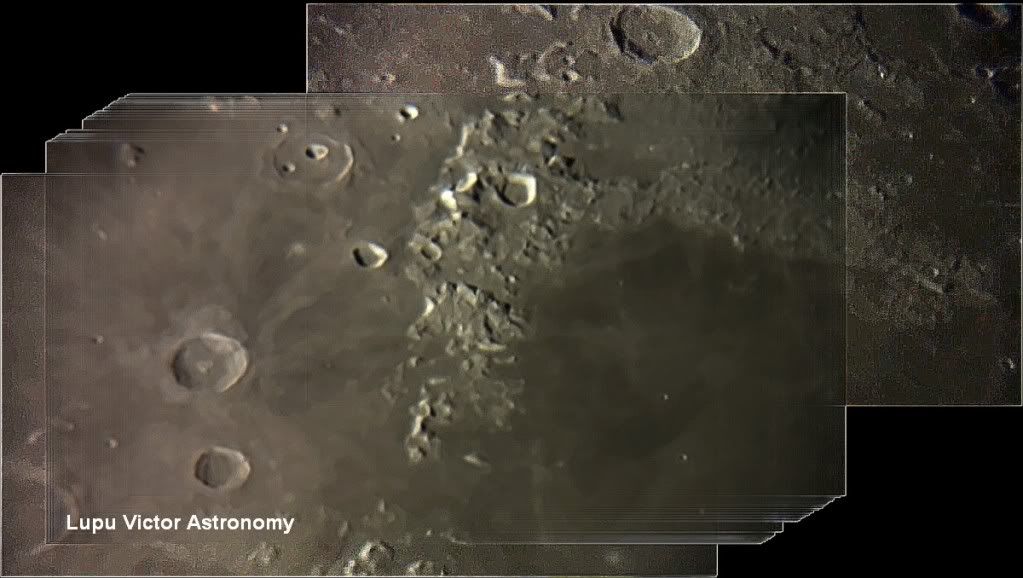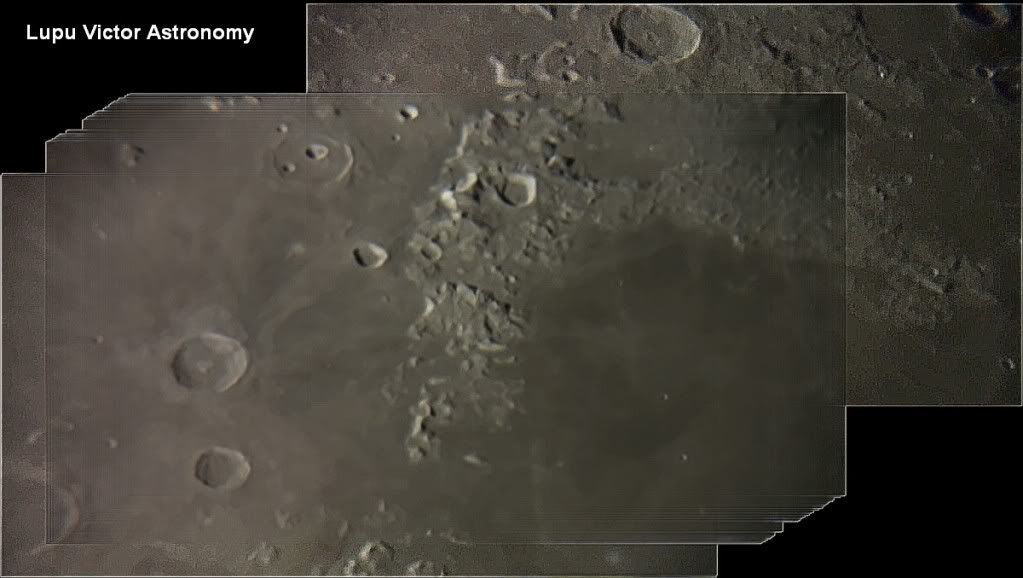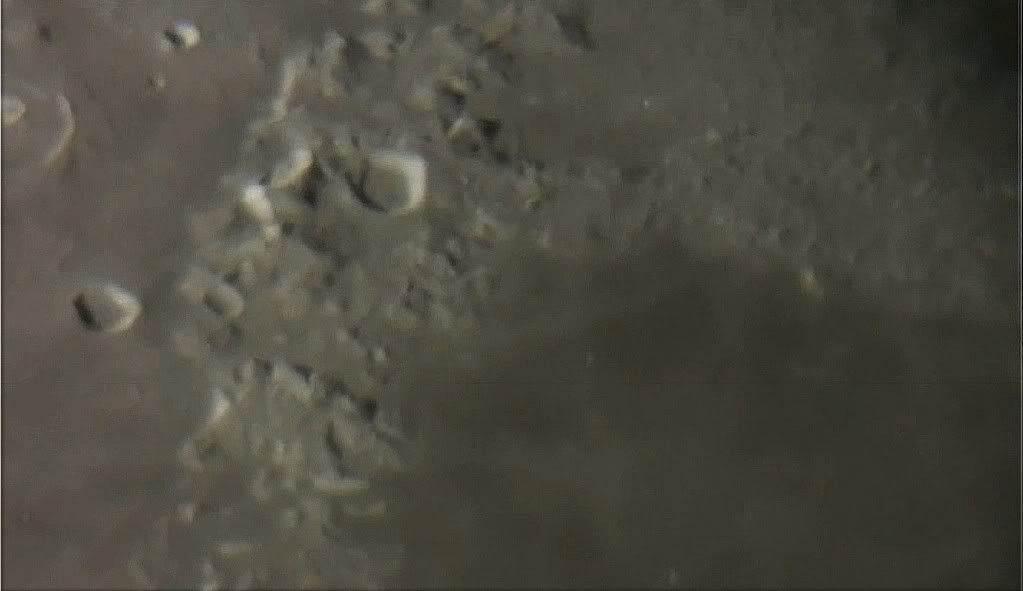In these images we see a few mountains on the Moon, namely Montes Caucasus and northern Montes Apenninus. Since the terminator is close to this area, peaks and the shadows they produce are best seen.
Montes Caucasus start north west of the crater Eudoxus, and ends at the south, where Montes Apeninnus begin. Montes Caucasus, as Apenninus, are surrounded by two large basins, Mare Imbrium and Mare Serenitatis.
Between the Caucasus mountains, we distinguish a crater called Calippus (33 km), which at this stage we find it immersed in darkness.
Other craters seen here are: Lamech (13 km), Egede (37 km), Cassini (57 km), Theaetetus (25 km), Alexander (82 km).
Magnitude: -10.82
Phase: 0.46
Distance: 399.283 km
Illuminated: 45.6% (0% = New, 100% = Full)
Astronomical instrument: Celestron C8-Newtonian telescope,
Eyepiece: Plossl 20mm, 2x Barlow
Mount: CG5 (EQ5)
Camera: Sony CX130
Filter: no
Date: 30.01.2012
Location: Baia Mare, Romania
Processing: FastStone Image Viewer
In the picture below are labeled craters and other lunar features in the region. To better understand this photo, you should note that the label with the name or the letter of larger craters could be found at their center, and on the small craters, you should find them around them, usually above.
Montes Caucasus start north west of the crater Eudoxus, and ends at the south, where Montes Apeninnus begin. Montes Caucasus, as Apenninus, are surrounded by two large basins, Mare Imbrium and Mare Serenitatis.
Between the Caucasus mountains, we distinguish a crater called Calippus (33 km), which at this stage we find it immersed in darkness.
Other craters seen here are: Lamech (13 km), Egede (37 km), Cassini (57 km), Theaetetus (25 km), Alexander (82 km).
Magnitude: -10.82
Phase: 0.46
Distance: 399.283 km
Illuminated: 45.6% (0% = New, 100% = Full)
Astronomical instrument: Celestron C8-Newtonian telescope,
Eyepiece: Plossl 20mm, 2x Barlow
Mount: CG5 (EQ5)
Camera: Sony CX130
Filter: no
Date: 30.01.2012
Location: Baia Mare, Romania
Processing: FastStone Image Viewer
In the picture below are labeled craters and other lunar features in the region. To better understand this photo, you should note that the label with the name or the letter of larger craters could be found at their center, and on the small craters, you should find them around them, usually above.
 |
| Image from 10 February 2011. |










 Saturday, April 30, 2016
Saturday, April 30, 2016
 Unknown
Unknown


















